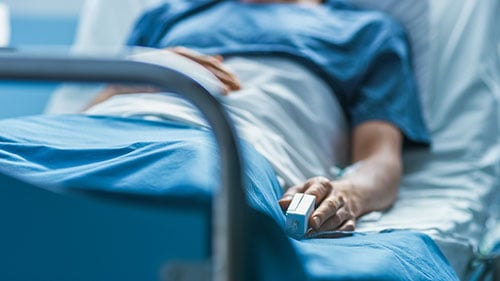 Ever wonder why and how specialty fabrics are designed for the healthcare industry? Or even how healthcare fabrics can be antimicrobial? Flame resistant? Stain and odor resistant? Mildew and mold resistant? Well, there’s a lot more to healthcare fabrics than meets the eye!
Ever wonder why and how specialty fabrics are designed for the healthcare industry? Or even how healthcare fabrics can be antimicrobial? Flame resistant? Stain and odor resistant? Mildew and mold resistant? Well, there’s a lot more to healthcare fabrics than meets the eye!
Healthcare Fabrics and Applications
Fabrics are versatile and are used in a variety of applications including in clothes, military uses, agricultural, and of course the healthcare industry. Specialty fabrics are part of our lives more than you might think. In the healthcare industry, these fabrics are specially coated or created with antimicrobial features and are often flame resistant and mold and mildew resistant. Why you might be asking? Because in order to help prevent microbes from forming on the fabric surface, it’s important to have fabrics – which are used everyday in the medical setting – that are antimicrobial and stain resistant to start with.
Some examples of healthcare fabrics that are designed to reduce the risk of contamination on the fabric include but are not limited to:
- Mattresses
- Bed sheets and pillow cases
- Medical curtains
- Gloves
- Hospital gowns
- Blankets
- Gauze
- Bandages
So how do these healthcare fabrics work anyway? Well the way they are designed allows them to be antimicrobial which is important when it comes to having a safe environment at a hospital. These fabrics are coated or created with special chemicals that are either slowly released over time or are woven into the fabric itself.
For example Herculite Inc.’s Sure-Chek® brand medical fabrics are strong, durable, antimicrobial, antistatic, flame resistant, stain, odor and fluid resistant, and resistant to popular disinfectants when used as directed. In fact, Sure-Chek® medical fabrics are the original healthcare fabrics that were patented for use as protective covering fabrics and today are the standard in the industry.
Sure-Chek fabrics utilize a controlled-release system which allows the slow release of a specially formulated antimicrobial additive which lasts the life of the fabric. Antimicrobial additives protect the fabric from supporting bacteria. Fabrics that are also mildew and mold resistant help patients avoid infections as well.
Another great example of a healthcare fabric we don’t think about are hospital mattresses. These mattresses utilize fluid resistance and moisture transmission properties which help reduce the risk of fabric contamination from bodily fluids or other liquids. And on a more technical note, moisture vapor transmission is the result of molecular diffusion caused by different levels of humidity on either side of the membrane. However, using a healthcare fabric that is moisture vapor transmission resistant helps prevent contamination as well. This type of resistance is achieved by using membranes in the mattress that are impermeable to moisture vapor.
Another interesting fact is that medical fabrics include things like gauze, bandages, face masks, swabs, and scrubs. If you take a moment to look at your local doctor’s office or hospital, you will see these specialty healthcare fabrics are utilized in your bed, gowns, curtains and even in the blankets and sheets you use!
If you would like to learn more about healthcare fabrics like Herculite’s Sure-Chek fabrics visit https://www.herculite.com/healthcare-fabrics.
